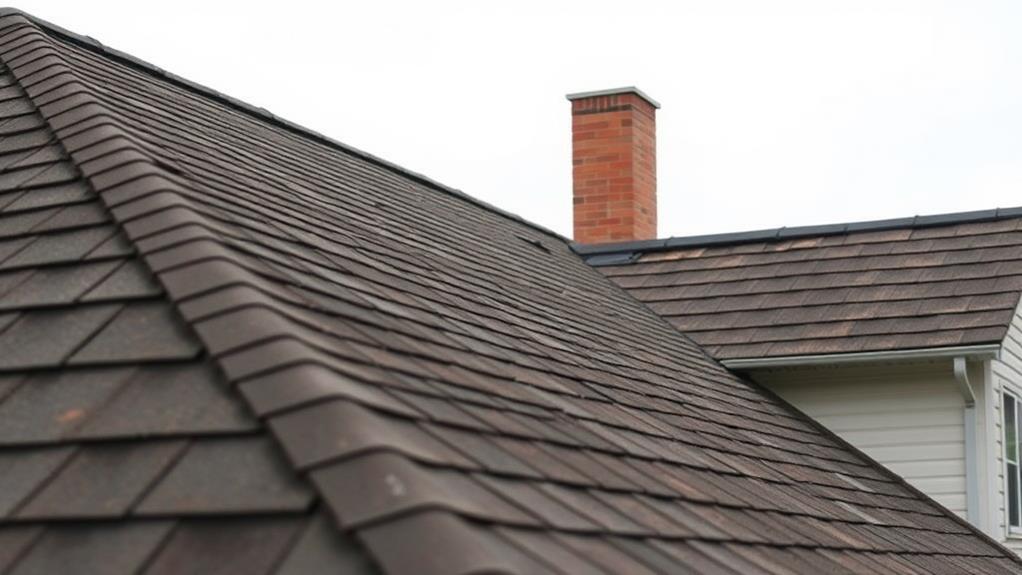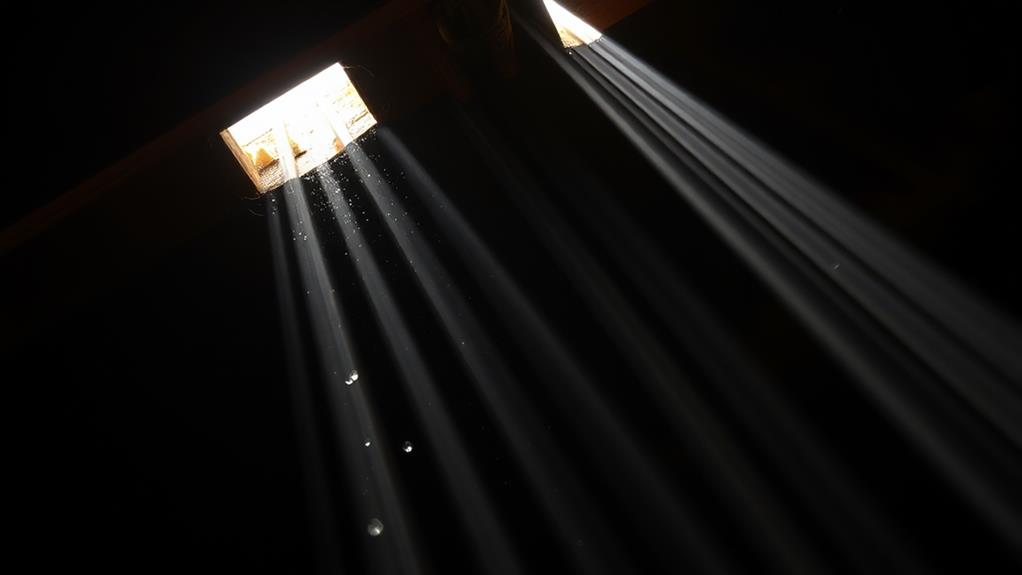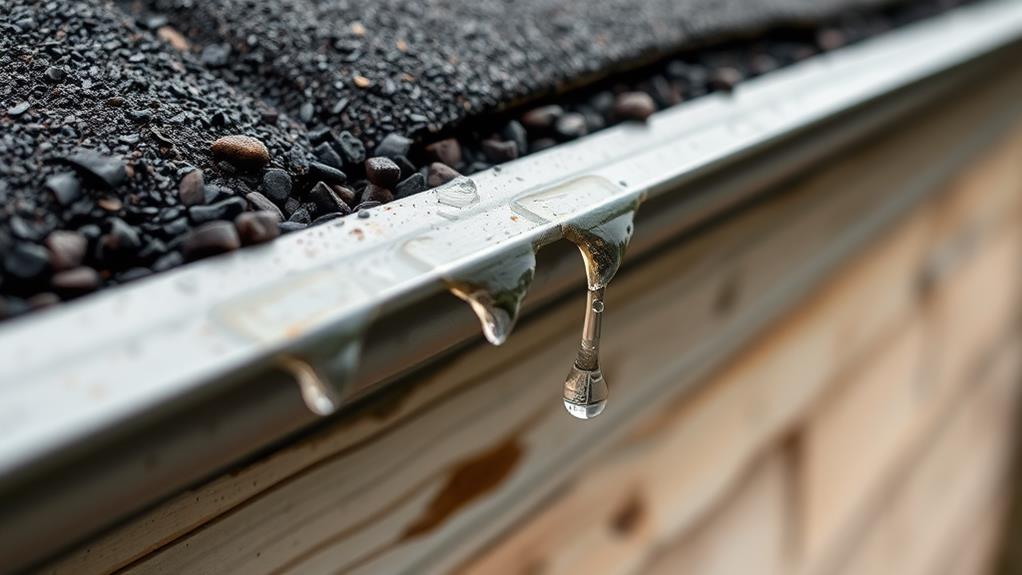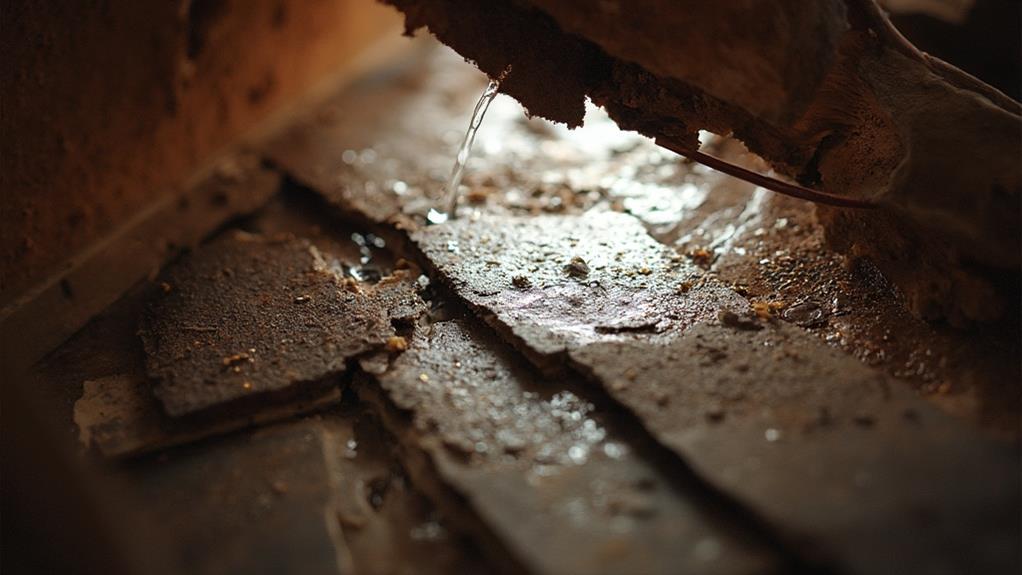After a severe storm, it's crucial to check for signs of roof damage. Five key indicators include a sagging roofline, which suggests structural compromise, and interior water stains, signaling moisture penetration. Attic light infiltration through gaps or holes in the roof structure is another red flag. Loose or missing shingles, especially along edges and corners, expose underlying materials to further damage. Lastly, excessive granules in gutters indicate deteriorating shingles. These signs point to potential roof compromise and warrant immediate attention. Understanding these warning signs can help homeowners take prompt action to protect their property and prevent more extensive damage.
Sagging Roofline

A sagging roofline is one of the most visible and concerning signs of a compromised roof. This structural issue typically indicates severe damage to the underlying support system, potentially caused by water infiltration, excessive weight, or weakened framing members. When a roof sags, it loses its ability to effectively shed water and protect the home's interior, leading to further complications if left unaddressed.
Storm damage can exacerbate existing weaknesses or create new ones, causing the roof to bow or dip. Heavy rainfall, hail, or strong winds can overload the roof's capacity, while falling debris may puncture the surface or damage crucial support elements.
In some cases, prolonged exposure to moisture can rot wooden trusses or rafters, gradually compromising the roof's integrity.
Homeowners should regularly inspect their roofline from the ground, looking for any noticeable dips, waves, or asymmetry. Interior signs of a sagging roof may include cracks in walls or ceilings, doors that stick, or visible bowing in upstairs rooms. If any of these symptoms are observed, it's crucial to consult a professional roofing contractor immediately to assess the damage and recommend appropriate repairs or replacement options.
Interior Water Stains
Interior water stains serve as telltale indicators of a compromised roof, often revealing hidden damage before it becomes catastrophic. These discolorations on ceilings or walls typically appear as yellowish or brownish spots, rings, or streaks. They occur when water penetrates the roof's protective layers and seeps into the interior structure of the building.
The presence of water stains suggests that your roof has been breached, allowing moisture to infiltrate. This can happen due to various reasons, including damaged shingles, compromised flashing, or gaps in the roof's structure. Even small leaks can lead to significant water stains over time, as moisture accumulates and spreads through porous materials.
It's crucial to address interior water stains promptly, as they indicate ongoing water damage that can lead to more severe issues such as mold growth, structural weakening, and electrical hazards. When you notice these stains, conduct a thorough inspection of your attic and roof to identify the source of the leak. Professional assessment may be necessary to determine the full extent of the damage and develop an appropriate repair strategy.
Attic Light Infiltration

While water stains indicate moisture infiltration, another sign of a compromised roof can be detected through visual inspection of the attic space. Attic light infiltration occurs when sunlight penetrates through gaps, cracks, or holes in the roof structure, becoming visible inside the attic. This phenomenon is a clear indicator that the roof's integrity has been compromised, potentially during a recent storm.
To check for light infiltration, enter the attic during daylight hours and turn off any artificial lighting. Allow your eyes to adjust to the darkness, then scan the roof decking and rafters for any visible light sources. Pay close attention to areas around vents, chimneys, and where different roof planes intersect, as these are common weak points. Light streaks or pinpoints suggest damaged or missing shingles, warped decking, or separation of roofing components.
It's important to note that even small amounts of light infiltration can signify larger underlying issues. These openings not only allow light to enter but also provide pathways for water, air, and pests to infiltrate your home. Prompt identification and repair of these compromised areas are crucial to prevent further damage and maintain your roof's structural integrity.
Loose or Missing Shingles
Shingles serve as the first line of defense against the elements, protecting your home from water infiltration and structural damage. After a severe storm, inspect your roof for loose or missing shingles, as these are clear indicators of potential compromise. Look for shingles that appear lifted, curled, or completely absent from their original position.
Strong winds can easily dislodge or tear off shingles, especially if they were already weakened or improperly installed. Check your yard and surrounding areas for fallen shingles, which may have been blown off during the storm. Pay close attention to the roof's edges and corners, as these areas are particularly vulnerable to wind damage.
If you notice granules from asphalt shingles in your gutters or on the ground, this suggests that the protective layer of your shingles has been compromised. Loose or missing shingles expose the underlying roofing materials to moisture, UV rays, and further damage from subsequent storms. Prompt identification and repair of these issues are crucial to prevent water leaks, mold growth, and more extensive structural damage to your home's roof and interior.
Granules in Gutters

Gutter granules serve as a telltale sign of roof deterioration. These small, sand-like particles are the protective coating on asphalt shingles, designed to shield them from UV rays and enhance their fire resistance. When you notice an excessive amount of these granules in your gutters or at the base of downspouts, it's a clear indicator that your roof may have sustained damage during a recent storm.
The loss of granules exposes the underlying asphalt to the elements, accelerating the aging process of your shingles. This can lead to reduced water resistance, increased vulnerability to future storms, and a shortened lifespan for your roof. After a severe weather event, it's crucial to inspect your gutters for an unusual accumulation of these granules.
While some granule loss is normal over time, a sudden increase following a storm is cause for concern. If you observe this phenomenon, it's advisable to conduct a thorough roof inspection or contact a professional roofing contractor. They can assess the extent of the damage and recommend appropriate repairs or replacement to ensure your roof's continued integrity and protection of your home.
Frequently Asked Questions
How Often Should I Have My Roof Professionally Inspected?
Professional roof inspections should be conducted annually, ideally in the spring or fall. However, after severe weather events or if you notice any signs of damage, it's advisable to schedule an additional inspection to ensure your roof's integrity.
Can Storm Damage to My Roof Affect My Home Insurance Premiums?
Storm damage to your roof can indeed impact your home insurance premiums. Insurers may increase rates if they perceive higher risk due to past damage. Promptly repairing and documenting roof issues can help mitigate potential premium increases.
What's the Average Cost to Repair Storm Damage on a Roof?
According to HomeAdvisor, the national average for roof repair costs is $950. The average cost to repair storm damage on a roof typically ranges from $700 to $4,000, depending on the extent of damage and roofing materials involved.
Are There Any DIY Temporary Fixes for Minor Storm Damage?
For minor storm damage, temporary DIY fixes include applying roofing tar to small leaks, securing loose shingles with roofing nails, and covering damaged areas with a tarp. However, these solutions are short-term and professional repairs are recommended for lasting results.
How Long Does a Typical Roof Repair Take After Storm Damage?
On average, 70% of roof repairs are completed within 1-3 days. The duration of a typical roof repair after storm damage varies depending on the extent of damage, weather conditions, and contractor availability. Most repairs take 1-5 days to complete.
Conclusion
In conclusion, vigilant homeowners should remain attuned to these five critical indicators of storm-induced roof damage. Prompt identification and remediation of structural compromises are paramount in preventing further deterioration and costly repairs. While some signs may be apparent, others require a keen eye and thorough inspection. Ultimately, addressing roof damage early can save property owners from being left high and dry when more severe weather strikes. Professional assessment is advisable when in doubt about roof integrity.

